Here's a flashback to a few weeks ago - a fun trip that's fallen through the cracks so far.
On the Sunday after my trip to Tainan, I went on a trip to Fo Guang Shan (佛光山), a temple complex serving as the headquarters of a worldwide Chinese Mahayana Buddhist order by the same name. I don't quite know what "Mahayana Buddhist" means, but I figure it's a branch of the main religion. Anyway, two friends had gone on Saturday morning to spend the entire weekend experiencing life in the complex, and I was to join them on Sunday morning.
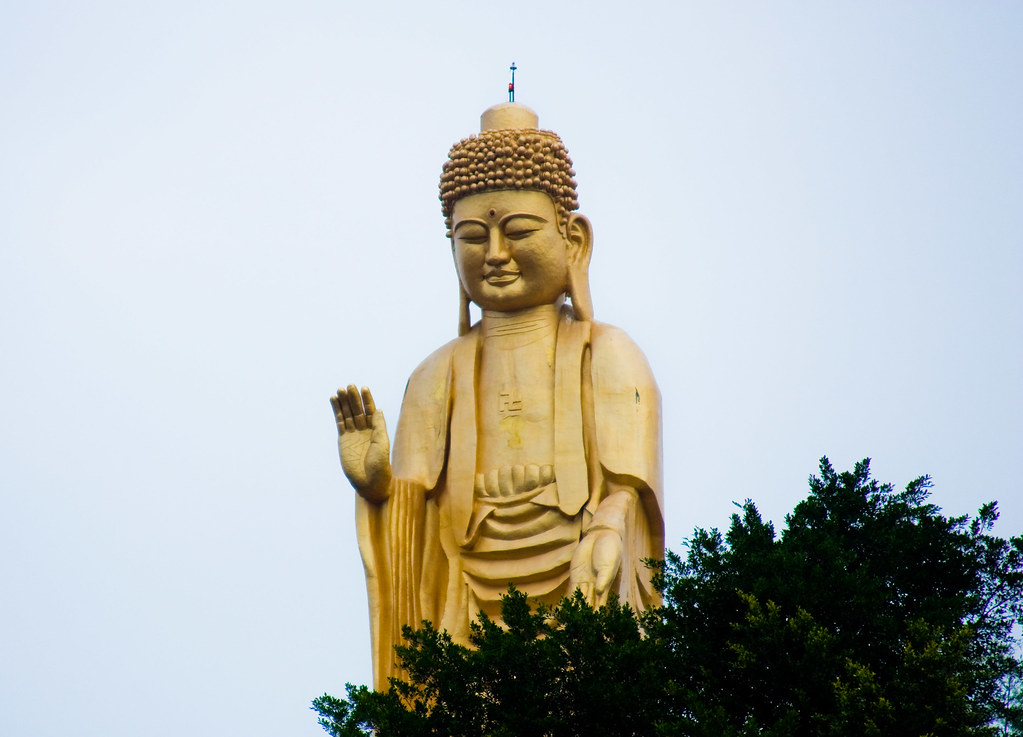
The Fo Guang Shan temple compound sits on roughly 30 hectares of forested hills, hence its name referring to a "mountain" (山). At the mountain's peak sits a statue of the Amitabha, the principle celestial Buddha, rising roughly 32m in height, greeting visitors from miles away.
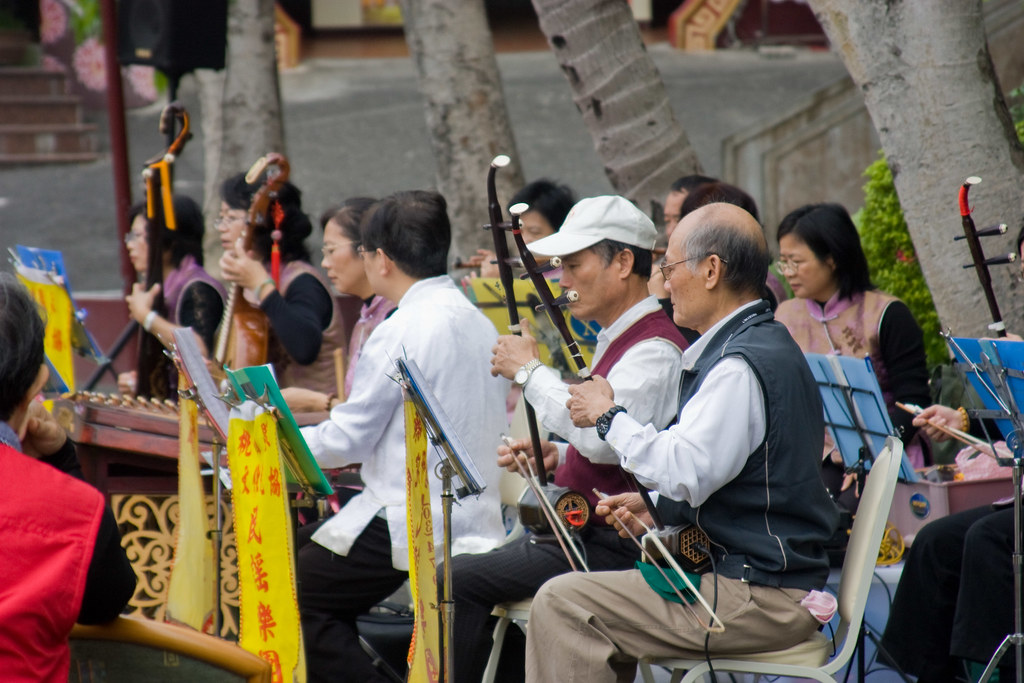
In the courtyard outside the main temple gate, a small group of musicians play some light traditional music with traditional instruments. Here is where I met my friends Kiki and Martin, who had already been awake since 5am to join a 2 hour chanting celebrating one of the principle Buddha's birthday, which incidentally was today.

It takes a bit of a climb to reach the top of the hill, where the giant Buddha statue is placed. Surrounding it are hundreds of man-sized Buddha statues, representing the infinite Buddhas residing the the Pure land. Our tour guide Linda, a local nun, tells the story of a family-run paint company who annually donates golden paint to no monastery other than Fo Guang Shan. Apparently it takes a massive amount of paint to keep the hundreds of statues covered year after year.
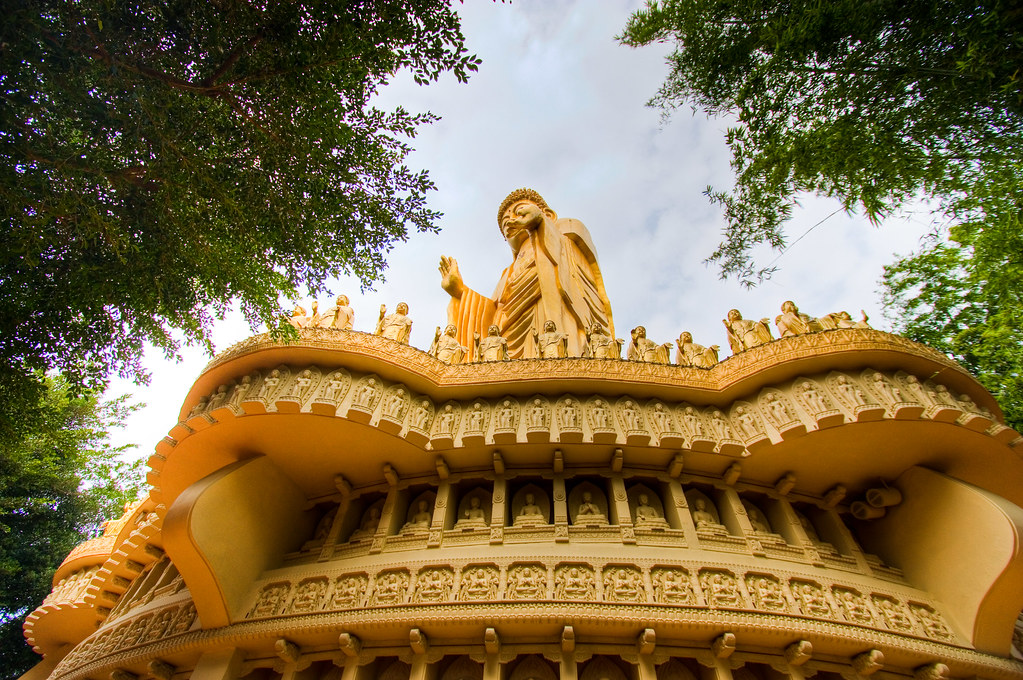
In addition to the hundreds of man-sized statues, the giant statue also sits on a base decorated with smaller statues, reliefs and various carvings. The base also houses a small shrine where devotees can pay respect to any of 4 divine statues. In exchange, one can help himself to "holy water" from a nearby pitcher, and retrieve a small scroll that contains a cookie-style fortune.

The temple grounds are filled with structures and shrines. In addition to a place of worship, the compound is also a religious university that teaches various subjects. Our guide Linda had once studied film editing here.
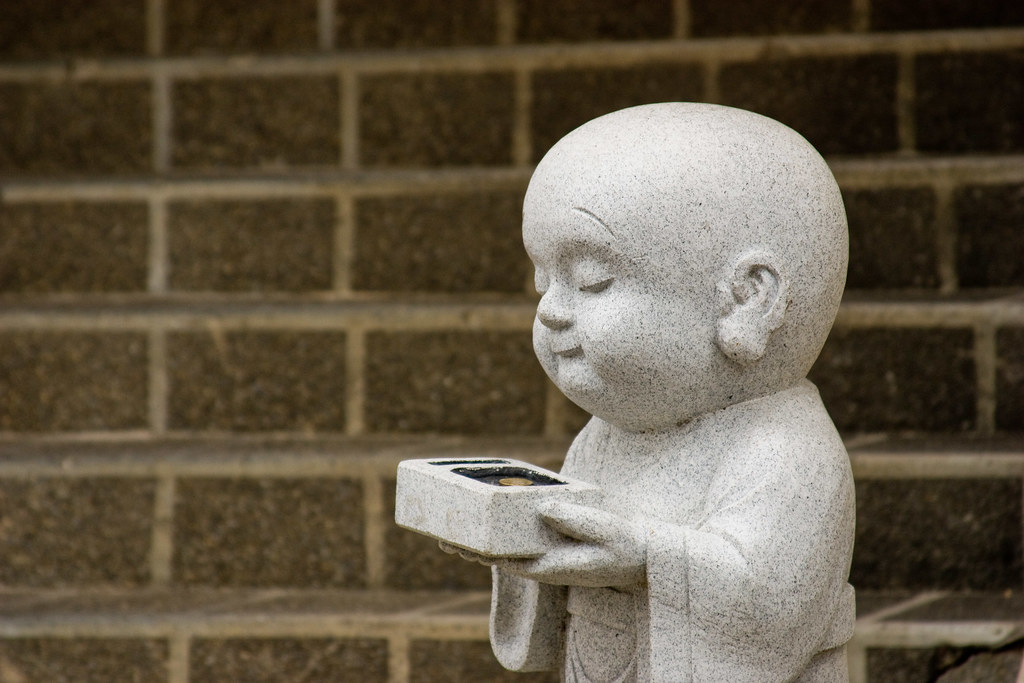
Various statues in the temple also pay homage to "junior monks". As the story goes, in the old days, families who are too poor to support their children usually drop them off at a local monastery, where they can be raised under religious care free of charge, funded by the charity of more fortunate devotees. Here, a statue asks for donations.

Further down the road, an entire garden is dedicated to youth, with plenty of statues of tiny, playful monks. This guy has a bird on his head, and the guy in the back is doing a little dance (possibly the YMCA).
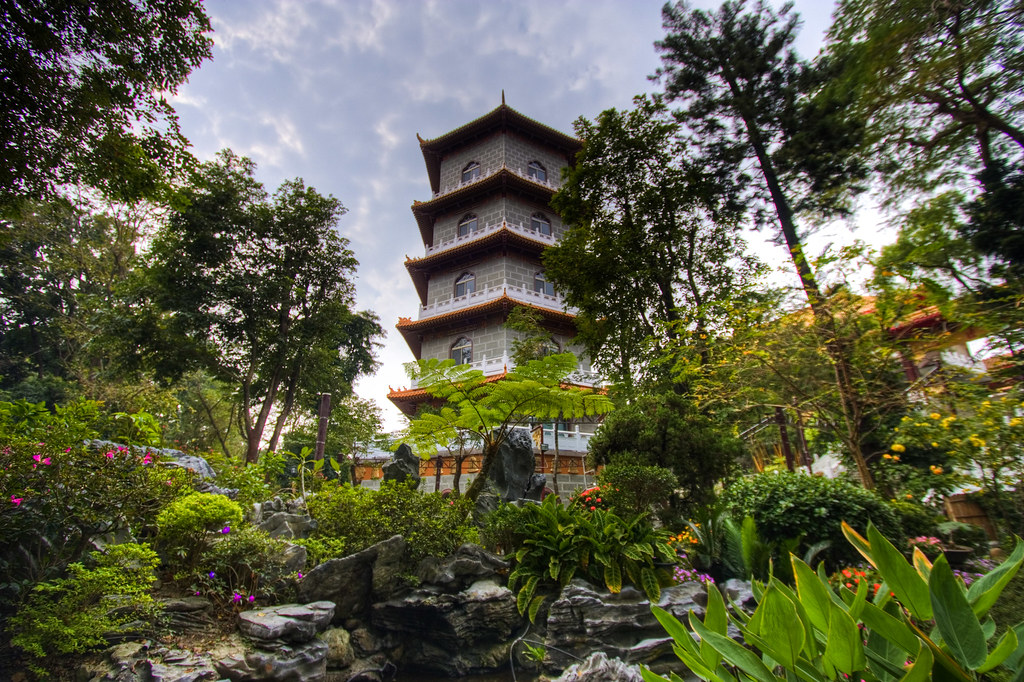
A pagoda stands next to the garden. I'm sure it would have been a nice view from the top, but we didn't get a chance to visit.

By chance, an annual meeting of a Taiwan Buddhism organization (whose name escapes me) was held on the same day, and the lunch hall had to host around 1000 people. Serving the crowd was exceedingly efficient. People entered single file to be seated at neat rows of tables. When seated, everyone faced the same way, so that kitchen staff (monks and nuns themselves) can serve food on the side of table opposite the eater. I wish I had a picture of the setup, but the entire event had to be perfectly silent save for some chanting at the beginning and end of the meal.

After lunch we visited the temple's main shrine, where devotees could pay respect to three principle Buddhas. The temple founder, Venerable Master Hsing Yun, wished the temple to be deeper, but due to a stubborn landowner unwilling to sell more land to the temple, the shrine had to be constructed much smaller than desired. It is still by far the largest single room in all of the compound.

Next, a calligraphy lesson in the classroom, where we were given special "trainer" brushes that had an internal ink supply (like a fountain pen with a brush tip) and traced characters pre-printed on practice sheets. It was certainly not traditional, but was still kind of hard anyway. Upon request, the supervising nun gladly gave us more practice sheets and pointed us to the gift shop to get the "trainer" brush.
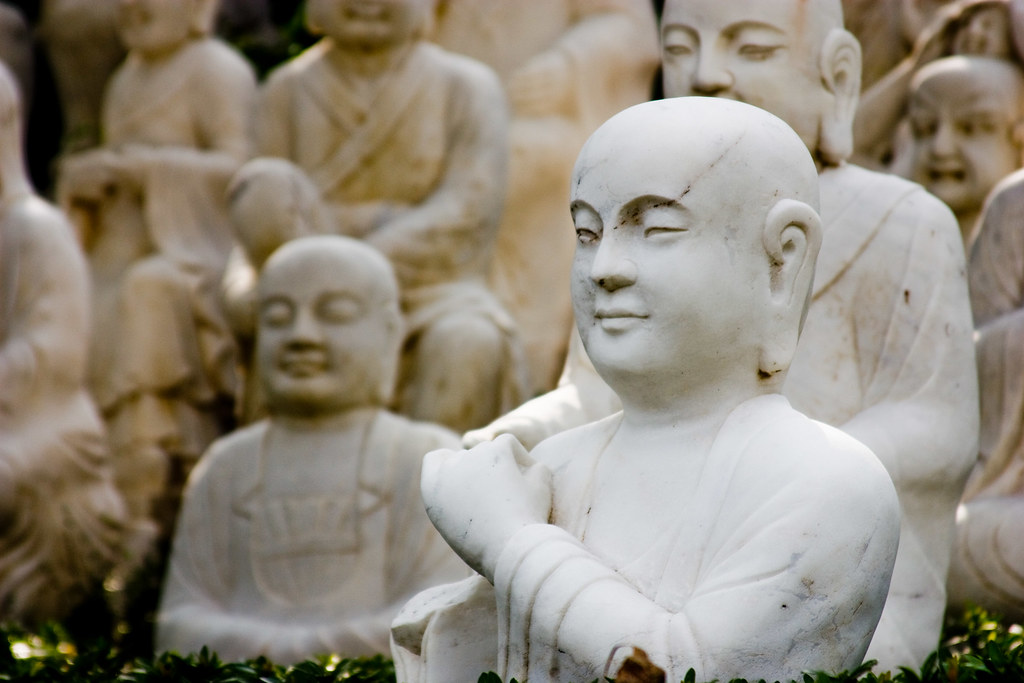
A bit down the hill, on either side of the path and behind some bushes were clusters of statues depicting monks in various poses.

Built under the main gate is a display for the kids. It's a windy underground path filled with colourful statues that sometimes break into dance and song as a visitor passes. It's somewhat cheesy and freaky at the same time when a colourful maiden suddenly starts singing from a dark corner you failed to detect earlier.
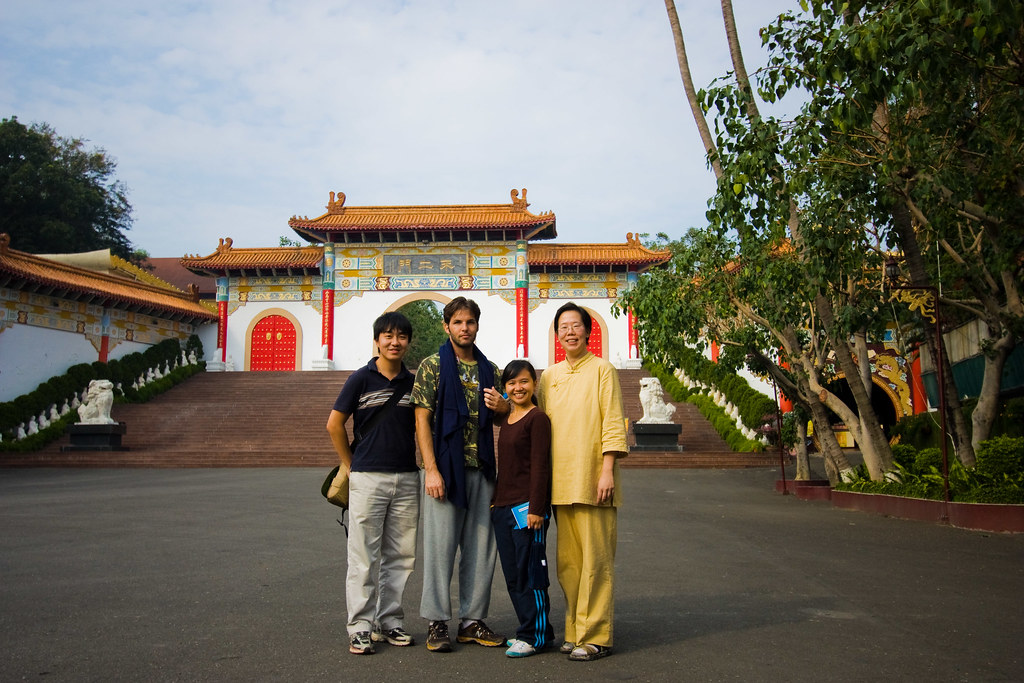
And thus ended the tour. Me, Martin, Kiki and our guide Linda pose for a final picture. We opted to take a taxi back to Kaohsiung, which was perhaps an hour away. The taxi driver drove us to the closest town and insisted that we be driven the rest of the way by his son. Not thinking at the time, we complied, but immediately afterwards I thought that this might be exactly how foreigners are kidnapped, stripped of belongings, and held for ransom. None of those things happened and we got home safely, but I'll certainly never do that again! Fo Guang Shan was good, though; I learned a slight bit about Buddhism.
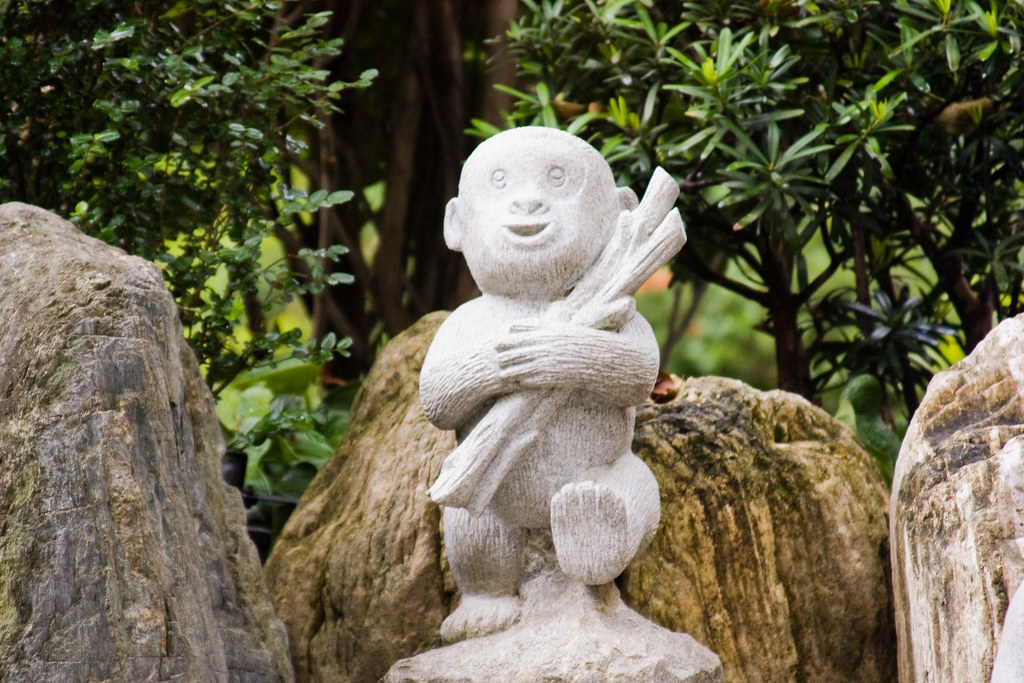
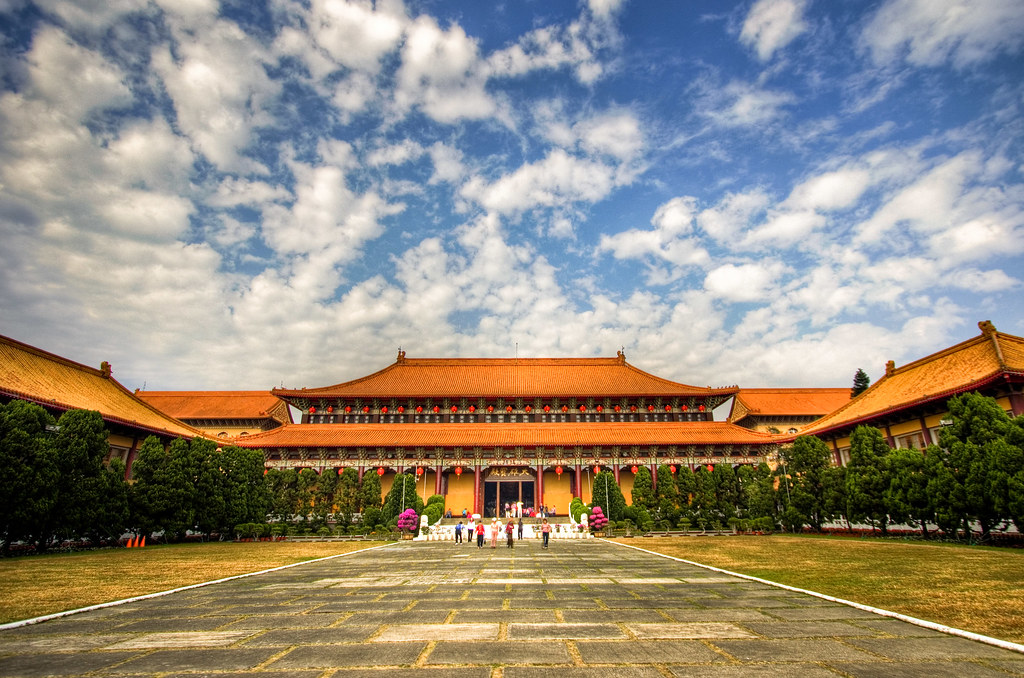
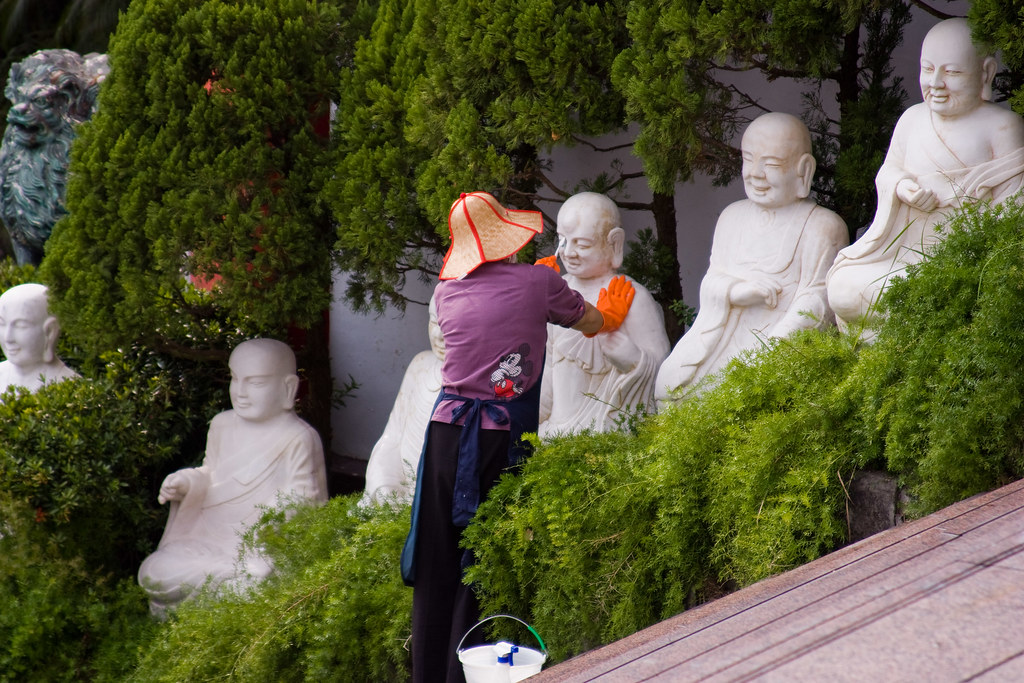




No comments:
Post a Comment